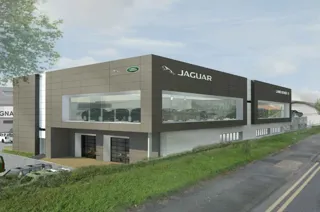The apparent stability of the UK market (up 5.3%) masks some big structural changes.
There were two important milestones: the SUV segment passed 10% for the first time, and the upper medium segment (Mondeo-type cars) finally slipped behind compact executives (BMW 3 Series).
The SUV segment is the one that has confounded expectations the most.
At the start of the financial crisis, it was hit the hardest and it looked like a fashion bubble which had burst.
Today it looks like an unstoppable force.
In the case of the upper medium segment, its death has been foretold many times, but 2012 might be seen as the year it was buried.
Once the most lucrative part of the market, it is now barely worth entering for most carmakers.
If one takes out Ford, Vauxhall and Volkswagen, the total sales of all other models were just 29,600 or 1.5% of the market.
The fifth best selling manufacturer in the segment was Skoda – a proposition that would have seemed ludicrous a few years ago.
The city car sector had a good year and is now almost back to its scrappage-scheme peak of 10.3%.
Nearly all the growth came from two cars: the Fiat 500 and the VW Up/Skoda Citigo/Seat Mii triplets. The Fiat 500 is now easily the segment leader with a share of 16.6% and an increase of 34.7% on 2011.
Cynics would say that it needed to: as Fiat effectively only markets the Panda and the 500 in the UK.
However, the figures of the VW Up family are arguably more significant.
The Up itself sold nearly 15,000 units, which swelled to almost 22,000 when combined with its two siblings.
The super-mature VW design seems to be persuading people that they can buy this design instead of a supermini, and thus bringing in new buyers to the class.
Nonetheless, the supermini segment marginally improved its market share as people continued to downsize. In 2013, it should continue to do well with new models from Peugeot and Renault, both of which simply have to succeed.
The job for the Peugeot 208 is to save the company.
The Renault Clio does not have to save the whole company (its shareholding in Nissan means it is in far better health), but it does have to save Renault in this country.
Lower medium had a marginal decline, but it is still the heartland of the UK car market.
In 2013, the two big questions are how much share the VW Golf can gobble up, and whether the Focus Ecoboost will gradually eat into the sales of diesel Focuses.
The interesting issue with the Ecoboost is whether its smoothness and comparative economy at lower cost than a diesel will lead to a move away from diesel in this segment.
Diesel still had a record year in 2012, with a market share of 50.8%, but its rate of growth is slowing noticeably.
The lower medium segment is the key swing sector for diesel. With the approach of expensive Euro 6 diesel regulations in 2015, downsized and turbocharged petrol engines may have arrived just in time to offer an alternative to pricey diesel models.
Of the other segments, executive and luxury cars had fractional declines, but this was more due with most of the major models being well into their lifecycles.
Jaguar, in particular, will be hoping that the uprated diesels and estate versions of the XF will give sales a kick in 2013 (although the Government’s sudden decision to cut the tax-allowance break-point to 130g/km of CO2 when Jaguar is on 135g/km shows an alarming lack of focus on helping British industry).
Sports cars also had a small decline, but new models such as the Toyota GT86 and Hyundai Veloster should be able to reverse the decline.
Overall, 2013 looks to be more of the same.
The market is unlikely to grow much, with a continued downsizing trend for most and, for those lucky enough to be able to afford something bigger, ever more SUVs.
















Login to comment
Comments
No comments have been made yet.